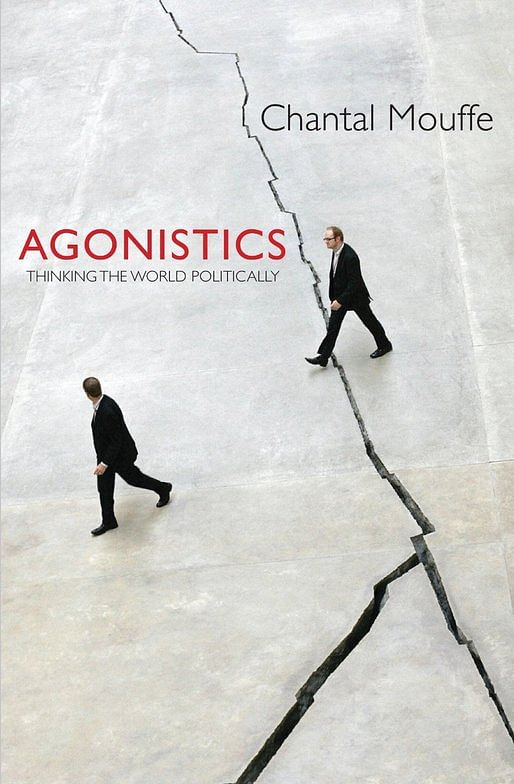
GSAPP continued its spring lecture series last Thursday night with the Belgian political philosopher Chantal Mouffe. The talk provided a brief interlude away from pure architecture and explored Mouffe’s theories on counter-hegemonic radicalization of democracy by the multitude through agonistic pluralism. Considering the entire lecture was as dense as the previous statement, Mouffe began with a much-needed summary of post-modern political philosophers ranging from Negri to Virno. She pointed out how they all advocated a general strategy of withdrawal, using exodus from established hegemonies as a form of political action. While Mouffe didn’t directly address the architect’s role within this paradigm, she noted how artists with political intentions abandon traditional institutions (museums, galleries, etc) to instill their work with radical meaning.

Mouffe formulated her lecture to bring up two essential points to her theories of agonistic pluralism, the first elucidating how withdrawal from hegemonic systems is not necessarily the most efficient form of protest, rather a process of transformation, dis-articulation and re-articulation of the political system by the multitude would be a more efficient outcome to counter-hegemonic interventions. Her second point highlighted the lack of representative voices in current political systems resulting in protests and activism around the world. While mobilization of the masses brings issues of inequality to light, she argues, citizens need to be offered a real alternative for representation and ‘accept becoming a part of the progressive will to radicalize a new hegemony.’
Basically to summarize, for political activism to enact change, Mouffe believes it is better to intervene and transform the existing codes rather than ‘start from scratch.’
Particularly interesting was the way Mouffe relates the role of the artist to counter-hegemonic interventions – placing them within the power structure and establishing that hegemonic systems extend far beyond the extents of politics. She articulated how the notion that to be a radical and transgressive artist implies working outside established institutions and occupy other spaces, but by engaging with these institutions (museums etc) artists can contribute to the multiplicity of the site of political action. Mouffe never differentiated between artists and architects, a point interesting in itself considering the number of architects in the audience, but architecture is as inherently intertwined with the complex hegemonic systems as politics and art. Architects have a direct hand in shaping spaces, public and private, that become representative, able to spatially reassert hegemonies versus provide a forum for individuals to engage in a multiplicity of levels of activism.
Mouffe’s lecture offered a moment of reflection outside of the architectural paradigm on the complexity of power struggles and extent in which politics, social identity and art constantly engage and influence each other. Especially amidst the resurging debate about whether architecture should be political or not (triggered by the recent remarks by Zaha Hadid denying any responsibility in the hundreds of deaths during the construction of her Al Wakrah Stadium in Qatar), Mouffe’s lecture brings up questions of the architect’s, artists and urban designers roles as representatives for the multitude. In the systemic interventions and transformations she proposes – Mouffe seems to have cleared a space for architect’s to accept their role in politics, and empowered them to participate in counter-hegemonic activity as an alternative form of transformative representation.
No Comments
Block this user
Are you sure you want to block this user and hide all related comments throughout the site?
Archinect
This is your first comment on Archinect. Your comment will be visible once approved.